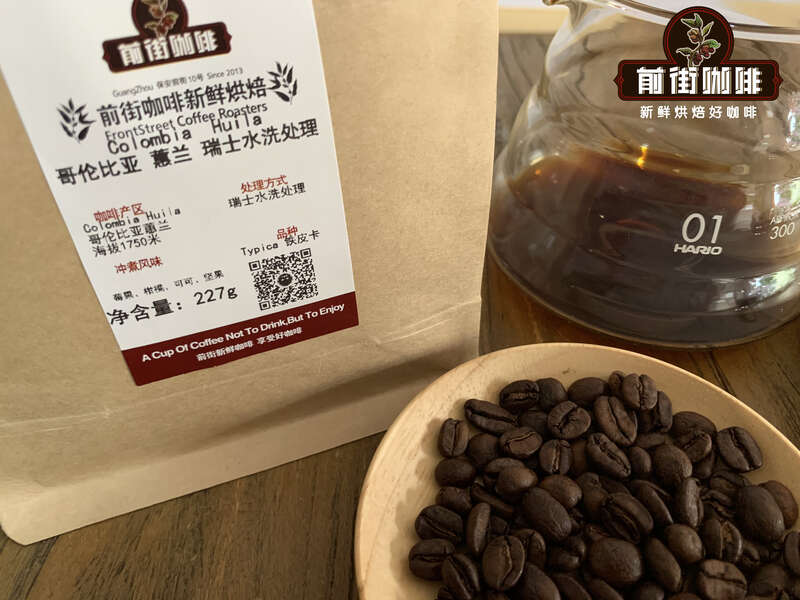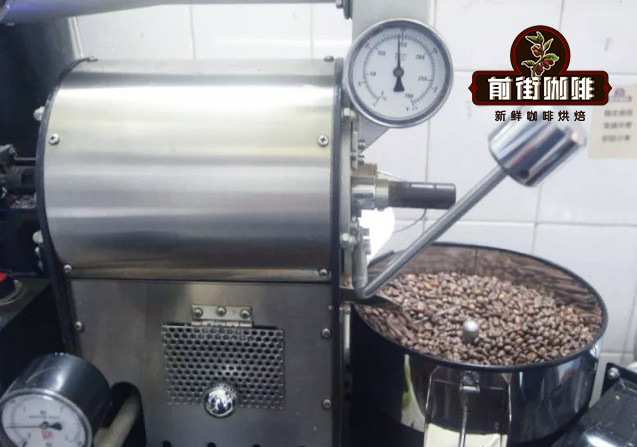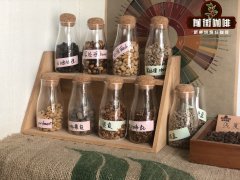How does coffee packaging maintain the flavor of coffee beans? why does the aroma of coffee beans dissipate?

The roasting of coffee takes time, effort and a lot of trial and error to release the flavor of coffee. However, after the baking is completed, it is also necessary to ensure that consumers can feel the flavor of the coffee while drinking it.
This is where packaging works. The aroma of coffee can be preserved long enough by using the right packaging material, so that consumers can experience the flavor released by roasting.
What is aroma? Why does the aroma disappear?
Aroma is formed by the volatile flavor compounds released by coffee beans during roasting and is usually used to describe the taste or aroma of coffee beans.
Although the word "Aroma" is usually associated with smell, when we drink coffee, we use it to describe the taste and aroma of coffee, which is generally called "flavor".
This is because the human tongue can only pinpoint some basic sensory tastes (such as bitterness, sweetness and taste). As a result, many of the more complex flavors in coffee are actually olfactory.
The aroma compounds that we can identify in the coffee aroma are actually released during the baking process, more specifically by the Maillard reaction during the baking process. When Maillard reaction occurs, a large number of aromatic compounds are released, of course, not all pleasant taste, but also bad taste released.
The retention of coffee flavor is usually used as an indicator of coffee freshness. To put it simply, the more aromatic compounds, the fresher it is and the better it will taste. The release of volatile components in coffee occurs naturally, but some environmental factors can speed up the process and make the aroma of coffee volatilize more quickly.
Methyl mercaptan is also one of the indicators of freshness. Methanethiol itself is an irritating chemical, but surprisingly, in coffee, as an aromatic compound, it hides a bad smell.
In Paul Songer's book the problem of freshness: "Coffee powder is in direct contact with the air, and within one day you can clearly feel the decrease of methanethiol, and within three weeks 70% of methanethiol disappears."
Exposure to oxygen or oxidation is one of the most common reasons for the loss of coffee aroma. In a podcast from the Fine Coffee Association, Samo Smrke of the University of Applied Science and Technology in Zurich said: "when I talk about chemical freshness, I mean the aroma of coffee because it is produced by volatile chemicals present in coffee beans. Therefore, the loss of chemical freshness means the loss, oxidation or change of aroma. "
According to Smrke's research, higher temperatures also accelerate the oxidation process of coffee. It accelerates the loss of some of the more sensitive volatile compounds in coffee, such as methyl mercaptan or butane-2-diketone (usually associated with the sweetness of butter, caramel, fruit, etc.).
Therefore, coffee beans are best stored in a cool and dry place, but should not be frozen. During thawing, the condensed water produced by condensation will cause moisture in the beans, reduce their quality, and dissolve some volatile compounds. The best storage environment is a few degrees below room temperature.

How does packaging help preserve the flavor of coffee?
In 1895, Thomas Royal made the first multi-layer paper bag to preserve coffee. Yu told me that multiple layers are a key part of effective packaging. "if there is only one layer, it is difficult to maintain the flavor of coffee beans. In order to prevent the influence of moisture, oxygen, sunlight, calories and other factors, different materials are needed to protect coffee beans."
In Smrke's research, he tested the effectiveness of aluminum, which is used as the inner layer of coffee packaging. He found that compared with plastic, paper and other porous materials, aluminum is the most effective oxygen barrier, which also protects against moisture.
However, the cost of using aluminum as the inner layer of packaging is high. As a result, they are usually replaced by metallized films (polymer films coated with a thin layer of aluminum).
Researchers and packaging manufacturers are also looking for more sustainable options that could easily biodegrade or reintroduce the supply chain, Yu added. She told me that this year, MTPak Coffee has introduced fully recyclable multi-layer packaging. This kind of packaging has only two layers, and the use of fewer layers can reduce the environmental impact of the packaging and ultimately minimize the carbon footprint in the manufacturing process.
Seal
After you have chosen the correct packaging, the next step is to fill and seal. If the coffee packaging is not properly sealed, it will lead to oxidation and accelerate the loss of flavor.
Yu explained that there are several common ways to seal coffee packaging, "manual sealing, automatic sealing, direct thermal sealing, pulse sealing, vacuum sealing and so on."
The cost of sealing equipment is high and low, so Yu recommends comprehensive selection according to output, packaging type and other factors. For example, a typical hand artery punching and sealing machine may be difficult to use with a multi-layer side angle support bag.
In order to ensure freshness and ease of use, most consumers choose coffee packaging that can be re-sealed. Yu told me that reusable seals on the market include zippers, nylon clasp zippers and other forms. Similarly, the best choice depends on the structure, size and personal preference of the coffee bag.

Exhaust gas
One-way exhaust valve is a quite new concept. It was invented in the 1960s by the Goglio company in Milan, Italy. Exhaust is the process by which coffee beans release gas, that is, carbon dioxide. Although the carbon dioxide in coffee beans will prevent the oxidation of coffee, too much carbon dioxide will have a negative effect on coffee extraction.
The one-way exhaust valve can be placed on almost any coffee bag without damaging the existing package seal. It usually consists of five parts: a cover, an elastic disc, a viscous layer, a polyvinyl board and a paper filter.
Coffee has a large exhaust volume in the few days after roasting, and the process will continue for some time. When carbon dioxide accumulates in the package and puts pressure on the one-way exhaust valve, the carbon dioxide is released through the one-way exhaust valve without compromising the integrity of the coffee package or allowing oxygen into the package. This can also prevent the rapid loss of aromatic compounds.
"the one-way exhaust valve can be used at any time," Yu said. The baker can order the package with the valve or install it himself. "
What is modified atmosphere packaging?
Modified atmosphere packaging (MAP) is a method to prolong the shelf life of food or beverage by controlling the gas balance in the sealed package.
In coffee, MAP removes or replaces oxygen in the package to reduce the risk of oxidation and eventually preserve more volatile aromatic compounds.
MAP is usually used in vacuum sealing products, and then "replace" the natural gas components.
Vacuum sealed packaging was invented at the beginning of the 20th century. However, although vacuum sealing alone can preserve the volatile flavor compounds in coffee and prevent the entry of oxygen, it is not a perfect solution. Coffee will be vented in a vacuum sealed bag, which may cause the package to expand and burst.
Nitrogen filling
One of the most popular MAP technologies is nitrogen flushing, which "flushes" oxygen by charging nitrogen.
This method reduces the chance of oxidation, preserves the aromatic volatile compounds and seals them in the bag. Unlike oxygen, nitrogen does not affect the flavor of coffee. In addition to coffee, nitrogen washing is also commonly used to pack and preserve potato chips.
Yu told me that even small-scale bakeries can do this by buying nitrogen tanks. She also recommends that bakers using MAP buy gas analyzers to monitor oxygen levels in the package.
Important Notice :
前街咖啡 FrontStreet Coffee has moved to new addredd:
FrontStreet Coffee Address: 315,Donghua East Road,GuangZhou
Tel:020 38364473
- Prev

Proportion of Timani Girl Coffee Bean Powder cooked with AA Coffee beans in Neri Nyeri production area in Kenya
Professional coffee knowledge exchange more coffee bean information please follow the coffee workshop (Wechat official account cafe_style) front street coffee Kenya Timani girl AA coffee producing area: Neri Ndimaini processing plant altitude: 1700-1900m varieties: SL28SL34 treatment: K72 washing season: 2020 grade: AA Neri producing area Nyeri Neri near the mountains of Kenya
- Next
Kenyan coffee beans, coffee beans
Professional coffee knowledge exchange More coffee bean information Please pay attention to coffee workshop (Weixin Official Accounts cafe_style) Front Street Coffee Kenya Jiachasha Cooperative AB Coffee Bean Producing Area: Kenya Neri Jiachasha Cooperative Processing Plant: Gathaithi Processing Plant Elevation: 1825m Variety: SL
Related
- Beginners will see the "Coffee pull flower" guide!
- What is the difference between ice blog purified milk and ordinary milk coffee?
- Why is the Philippines the largest producer of crops in Liberia?
- For coffee extraction, should the fine powder be retained?
- How does extracted espresso fill pressed powder? How much strength does it take to press the powder?
- How to make jasmine cold extract coffee? Is the jasmine + latte good?
- Will this little toy really make the coffee taste better? How does Lily Drip affect coffee extraction?
- Will the action of slapping the filter cup also affect coffee extraction?
- What's the difference between powder-to-water ratio and powder-to-liquid ratio?
- What is the Ethiopian local species? What does it have to do with Heirloom native species?

